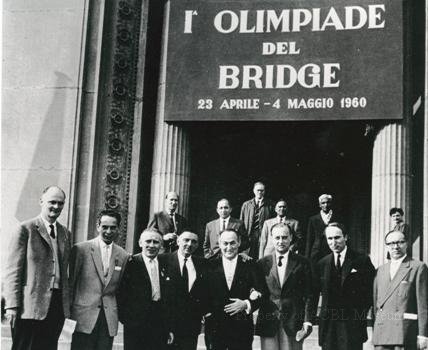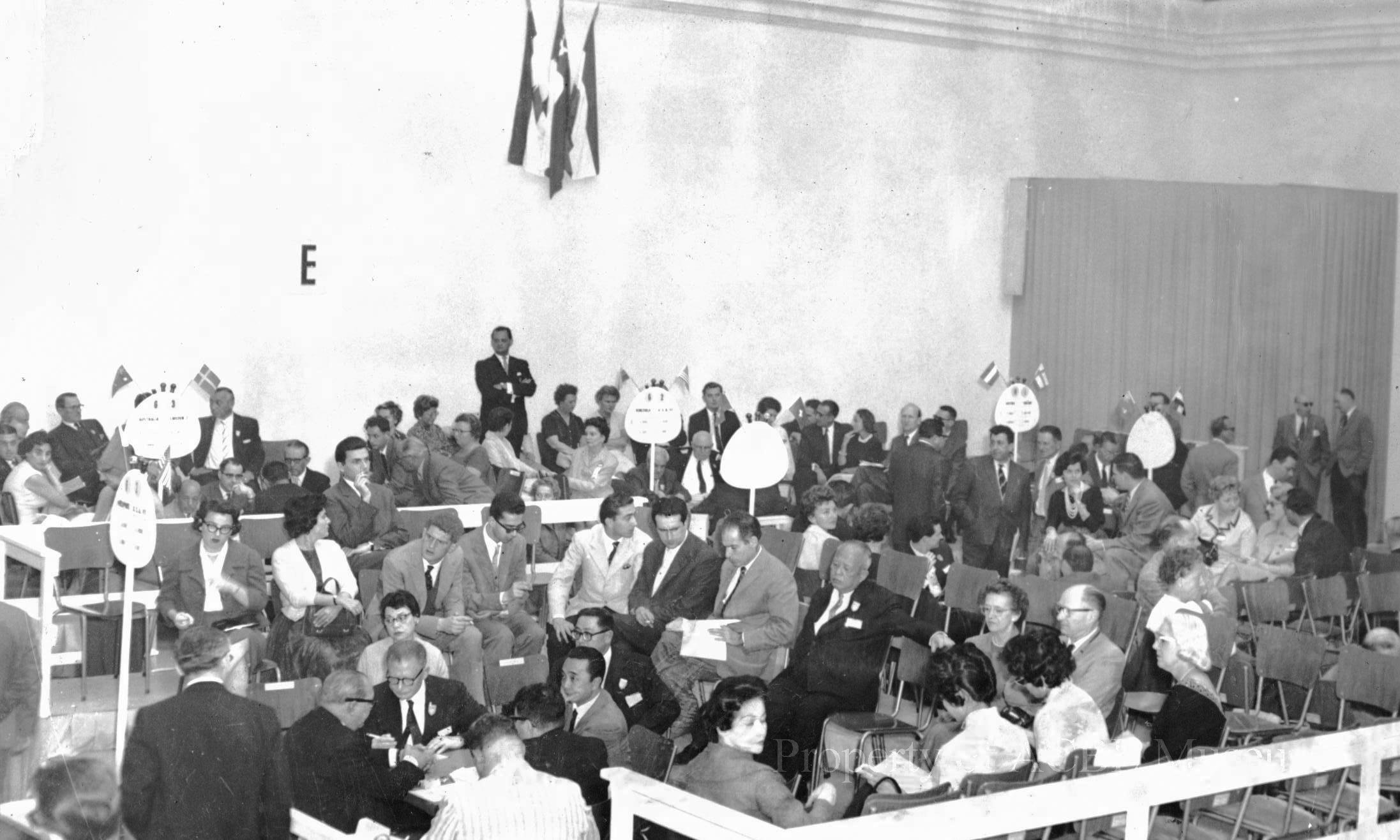Twenty-nine teams from twenty-five countries entered the first World Bridge Olympiad. Fourteen of those countries also sent women’s teams to compete simultaneously with the open series.
Based on total membership of its Leagues, Sweden entered two teams and the United States entered four teams in the open series. (This method of representation was repealed and only one team per country would be allowed in the future.)
A beautiful new trophy for the Olympiad was presented to the WBF by Harold Vanderbilt. Vanderbilt’s generosity also provided for individual replicas for future winners. The cards for the Olympiad were provided by the U.S. Playing Card Company and Charles Goren.
The 12-day marathon, April 23 – May 4, 1960, was played in the exhibition hall of the Society for Promoting Fine Arts in Turin, Italy. Despite the reported chilliness of the building, the consensus was that the playing space and tournament organization was magnificent.
Every table in the open room was surrounded on three sides by a built-up three-row grandstand. Each table was identified by the flags of the two nations whose teams were playing and the names and geographical position of all four players.
A system of buzzers and lights enabled the players to summon a director, a waiter or messenger to move boards without leaving the table or raising a voice. A similar signal system, connected with the closed room, advised players there when the play if their match was over in the open room and they could be released.
Hand records were made out on four-copy forms – a separate form for the cards of each player. One copy served as a curtain card, placed in the pocket of the hand so the player who held it could make certain the board had not been fouled.
The duplicate hand records were used to give each captain a copy of all deals played and a summary of the score after the conclusion of each session. The fourth copy became part of the official record of the match for the press room.
Each player received a portfolio of information including a guide map of the city, a dictionary in six languages and a resume of rules under which the Olympiad was conducted.



